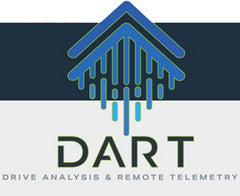WHAT IS DRIVE TELEMETRY?

What is drive telemetry? Why do I need it? How will my drive benefit from it?
That's a lot of questions. But they're good ones (even if we say so ourselves).
Most engineers will be familiar with telemetry - the automated real-time recording of data from a remote area and sending it back to another location for monitoring and analysis. It's the engineering version of E.T. phoning home, a cornerstone of predictive maintenance. The beauty of it is that, in unmanned plants, it allows you to see what's happening, night or day. Telemetry is pro-active, predictive monitoring, keeping you informed of issues, which - should they persist - could become critical. 'Nipping it in the bud' pretty much covers it...as does the more official terminology of "boosting operational efficiency".
So, remote cloud-based monitoring and management (RMM) and the data acquisition associated with it, is probably not new to you. But DART is.
"Condition monitoring" you say. Remote terminal units, SCADA (supervisory control and data acquisition – (but then you knew that). The IoT. Heard it all before? Nothing new under the sun. Until DART. It takes IoT monitoring and predictive maintenance for ABB drives to the next level.
Let's suppose previously you've used telemetry to monitor performance...or trends...or bottlenecks...or to tell you there's a REAL issue with your plant. NOW. At 4am. On a Sunday!
If it's that critical wouldn't it be better to know about it when it was just an "ouch" rather than a scream?
DART won't just sit there monitoring your variable speed drives on critical applications. Like any good bodyguard, it'll read the room. Plant room conditions deteriorating? It'll shout out. Too hot, too cold, H2S in the atmosphere - you'll be the first to know. And, depending on what the issue is, you'll be able to decide how to best action it. So, instead of leaving your, warm, comfortable bed at 4am because an issue has reached critical status, you'll be able to say "Ok. First thing tomorrow". That's the beauty of DART: monitoring your vital plant AND its ambient environment. Because, with decades of experience in drives (and their repair) your DART development partners know inverters often fail due to two interconnected factors. The first is lack of proper maintenance. The second is a poor environment, containing harmful substances (such as dust, humidity and hydrogen sulphide). Combined, they create a perfect storm which your variable speed drive has to weather. Using DART as your predictive maintenance lets you know when it's all getting too much for your inverters - before it really does get to be too much for them. Knowledge is power.
When you don't have telepathy...try telemetry - see the DART remote monitoring presentation.
